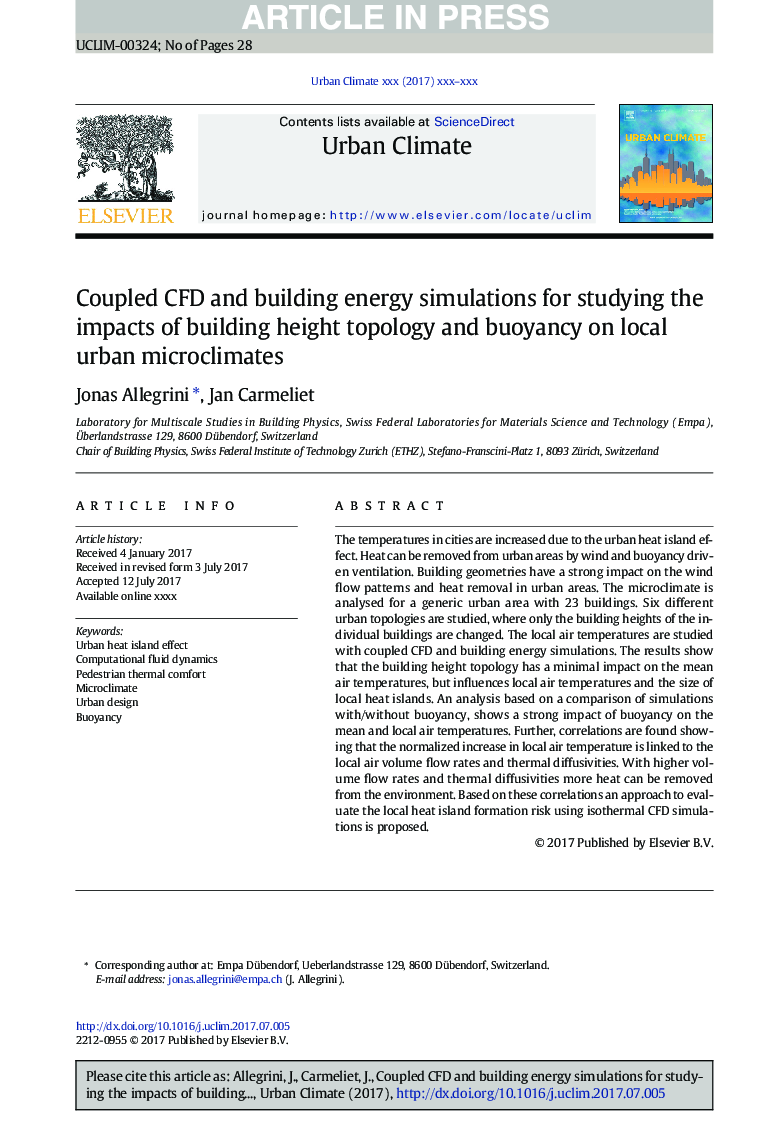| Article ID | Journal | Published Year | Pages | File Type |
|---|---|---|---|---|
| 4762366 | Urban Climate | 2017 | 28 Pages |
Abstract
The temperatures in cities are increased due to the urban heat island effect. Heat can be removed from urban areas by wind and buoyancy driven ventilation. Building geometries have a strong impact on the wind flow patterns and heat removal in urban areas. The microclimate is analysed for a generic urban area with 23 buildings. Six different urban topologies are studied, where only the building heights of the individual buildings are changed. The local air temperatures are studied with coupled CFD and building energy simulations. The results show that the building height topology has a minimal impact on the mean air temperatures, but influences local air temperatures and the size of local heat islands. An analysis based on a comparison of simulations with/without buoyancy, shows a strong impact of buoyancy on the mean and local air temperatures. Further, correlations are found showing that the normalized increase in local air temperature is linked to the local air volume flow rates and thermal diffusivities. With higher volume flow rates and thermal diffusivities more heat can be removed from the environment. Based on these correlations an approach to evaluate the local heat island formation risk using isothermal CFD simulations is proposed.
Keywords
Related Topics
Physical Sciences and Engineering
Earth and Planetary Sciences
Earth and Planetary Sciences (General)
Authors
Jonas Allegrini, Jan Carmeliet,
